In the first quarter of 2023, the western world witnessed a troubling spike in anti-trans rhetoric. State lawmakers in the US have already ushered in more anti-LGBTQ+ bills this year than in the past five years combined. As the barrage of restrictions to the safety and humanity of trans and queer individuals mounts, never has queer joy felt so requisite.
Serenade, the upcoming show from American portraitist Alannah Farrell accesses this joy as a device to sustain the perpetual campaign for justice in their community. Alannah’s biographical oil paintings disclose the struggles of alienation, anxiety and violence attending modern queer existence while sensitively honing the intimacy of shared experience.
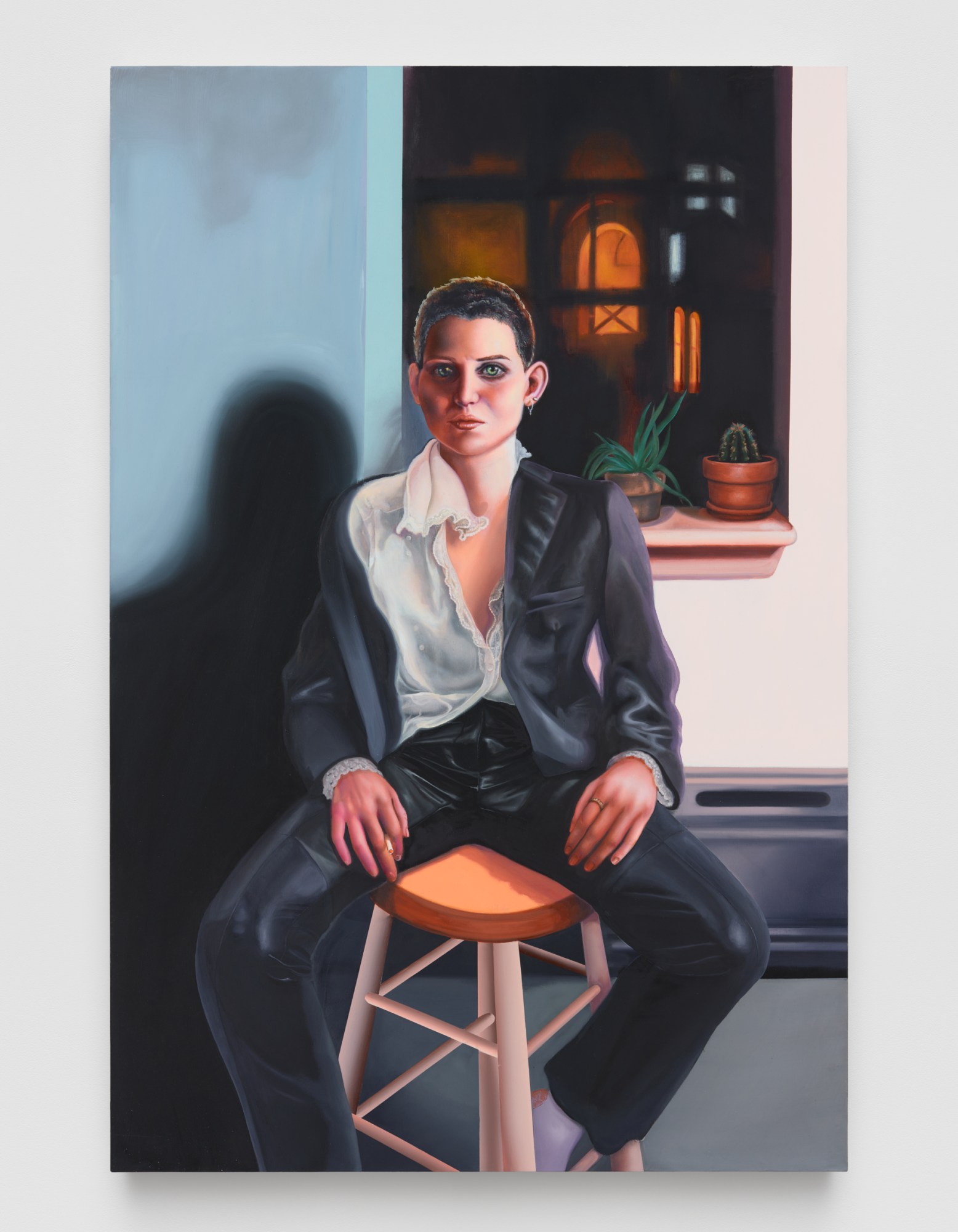
“Serenade is a very fucking gay title”, quips the artist, speaking from Los Angeles. “I originally wanted to go with something a little less fruity, but it really fits. Under the layers of hardness, worry and nihilism, I feel these paintings access a softness that I simultaneously experience when navigating the world. It’s something I have to access, and I gladly tap into that sentimental side without leaning too far into tenderness or ignorance.”
In resolute strokes, the artist pays tribute to friends, lovers, strangers, and self with equal acuity. Painted from life, subjects apprehend the viewer in a parallel state, the experience of being privy to a highly private moment. Describing an emotional connection with their sitters, Alannah says, “Whatever time we share in the studio filters into my excitement in doing the work, solidifying my dedication to portray people imbued with life.”
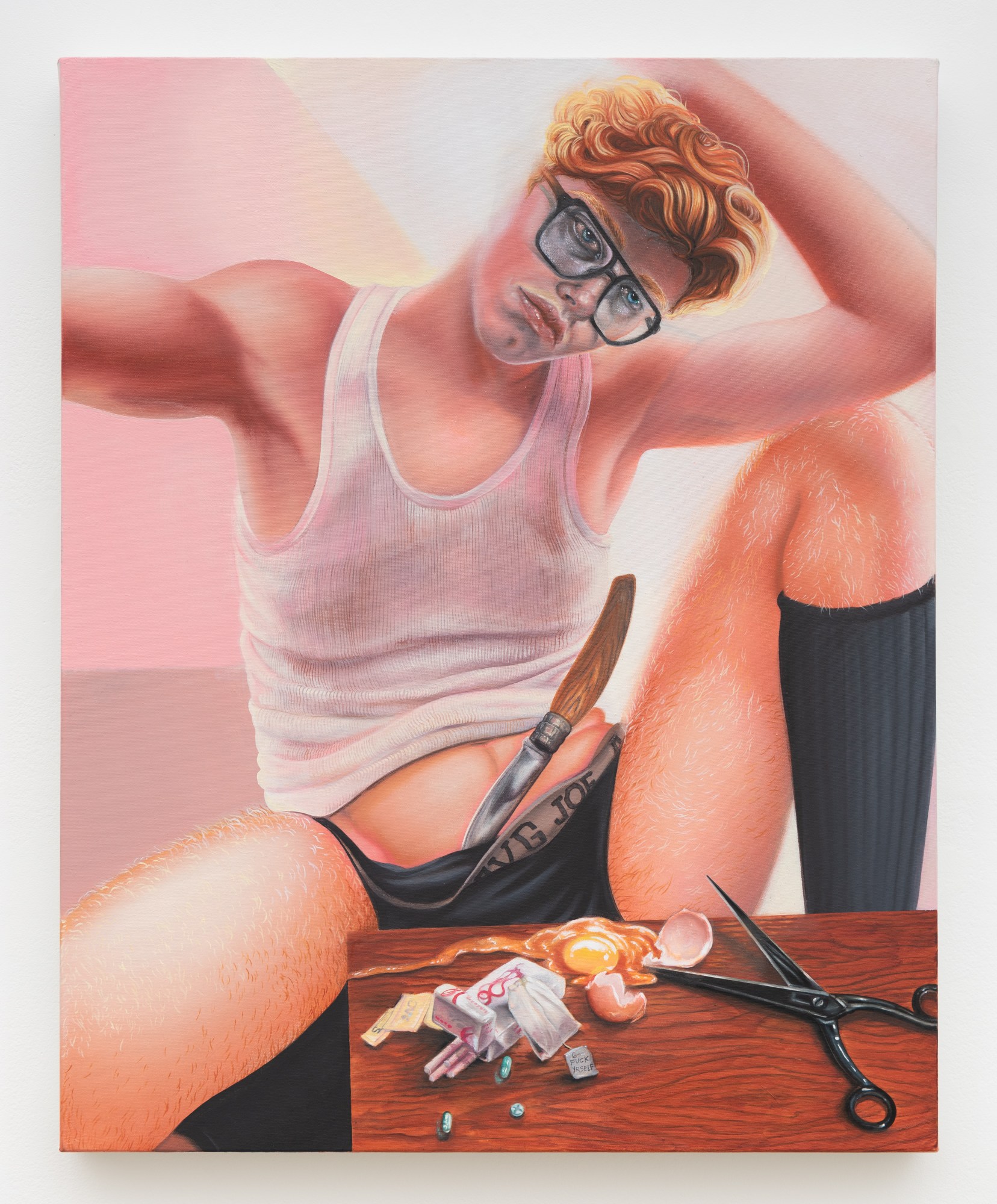
These penetrating moments captured in Alannah’s portraits are a credit to the artist’s attentiveness to constructing a safe and trusting environment, a space in which both model and painter are shielded from a society eager to erase or enact violence upon them. When two friends came and sat for Alannah recently, they questioned why the artist sat on the floor to paint them. “It’s something that had never crossed my mind,” they say. “I don’t always, but often I will sit in this little ball. In this series, people are posing on a low daybed, so they are slightly higher than I am. I have done lots of nurturing jobs in the past. I was a nanny for more than a decade, and I think that instinct to just get on the ground and talk to somebody organically at their level maybe comes from working with kids.”
Modest emblems of personal narratives and interiorities are dotted throughout the series of works, where fragments of identity manifest in a notebook, camera or packet of cigarettes. “I usually ask people to bring an item that is either precious or has a particular meaning,” Alannah says. “Sometimes that reflects their identity or what they do for work. I’ve had a few instances where someone with a disability will include a tool that’s necessary for their livelihood. As well as informing the narrative, I think it makes people feel more comfortable, and it makes me feel a little less exploitative.”
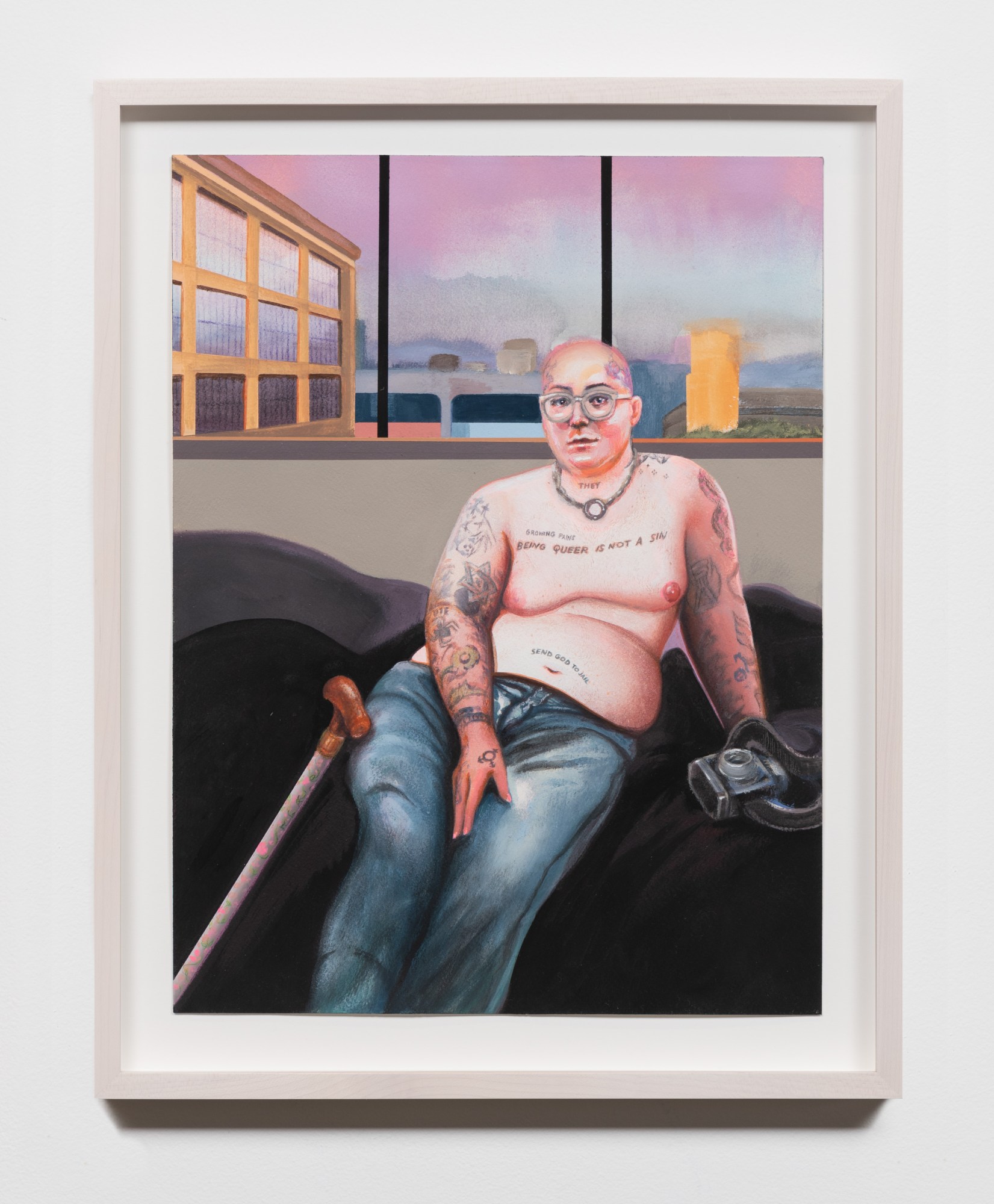
Throughout their practice, Alannah has primarily depicted trans bodies awakening to a blissful celebration of self and projects this in accordance with how the subject wishes to be seen and heard. Identifying as a queer trans person themself, the artist recognises the value of possessing ownership of that rendering in the face of heightened visibility.
“There has always been a part of me, especially in the past, that didn’t want to address my queerness as subject matter in art,” they say. “Even now, with the media focusing on trans politics and law-making, it’s a double-edged sword. But it’s not something I can untether from my art. A lot of the people I have met and painted recently — including one of my closest friends — work in politics on a federal level. Throughout our friendship, I’ve become more aware of what’s going on in my country, and I always have the same reaction, which is, ‘What the fuck is art? Art does shit all. It’s not saving anybody’s life.’ But they always have a counter-reaction to that, which is that trans joy is important.”
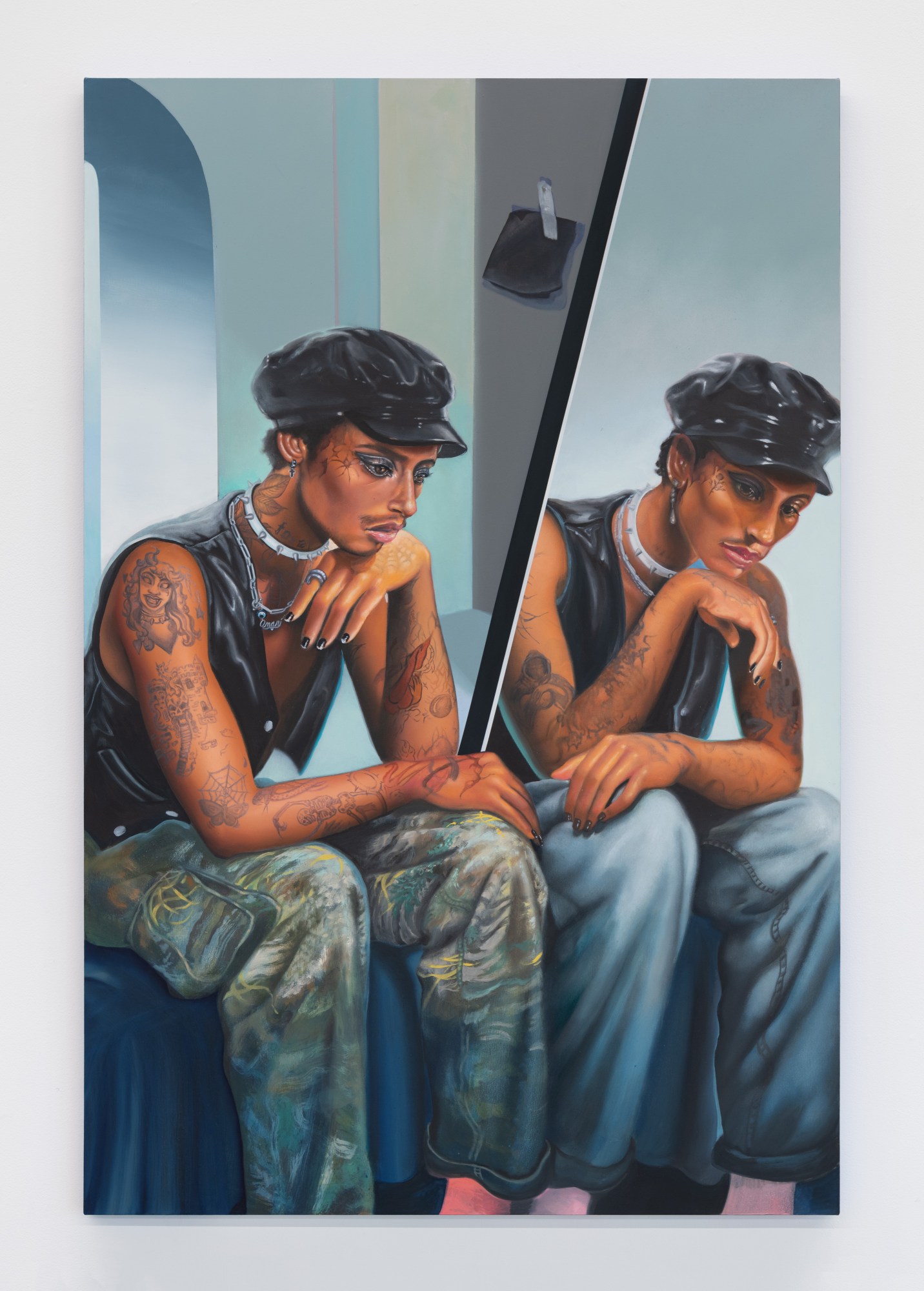
While Alannah expresses a hesitancy to discuss other people’s stories without them being present, they mention “Omari (FiDi)”, a painting — that at the time of speaking is unfinished — of a young queer artist named Omari. “I think this might be one of my favourites because of the excitement Omari had when coming to sit for me. Seeing somebody in their early 20s, incredibly involved in the nightlife and art scenes in New York, reminded me of me at that age, except they’re doing it in a much cooler way. The trans and queer club kids in New York that I’m seeing these days are creating spaces that are much more inclusive, and I’m really in awe of that.”
Playing out in the backdrops of “Serenade” is a tale of two cities, where the artist’s palette of cool blues, brooding purples and soft reds meets with more “garish and kitsch” tones. “I started these works in New York, where I have spent the majority of my life, in a space in the financial district that had very little light,” Alannah says. “It’s so narrow and gridded and blocks out any light even when the sun is shining. I went from that to here in Los Angeles, where the studio is orgasmic. Even after the sun has set, there are still all these colours.”
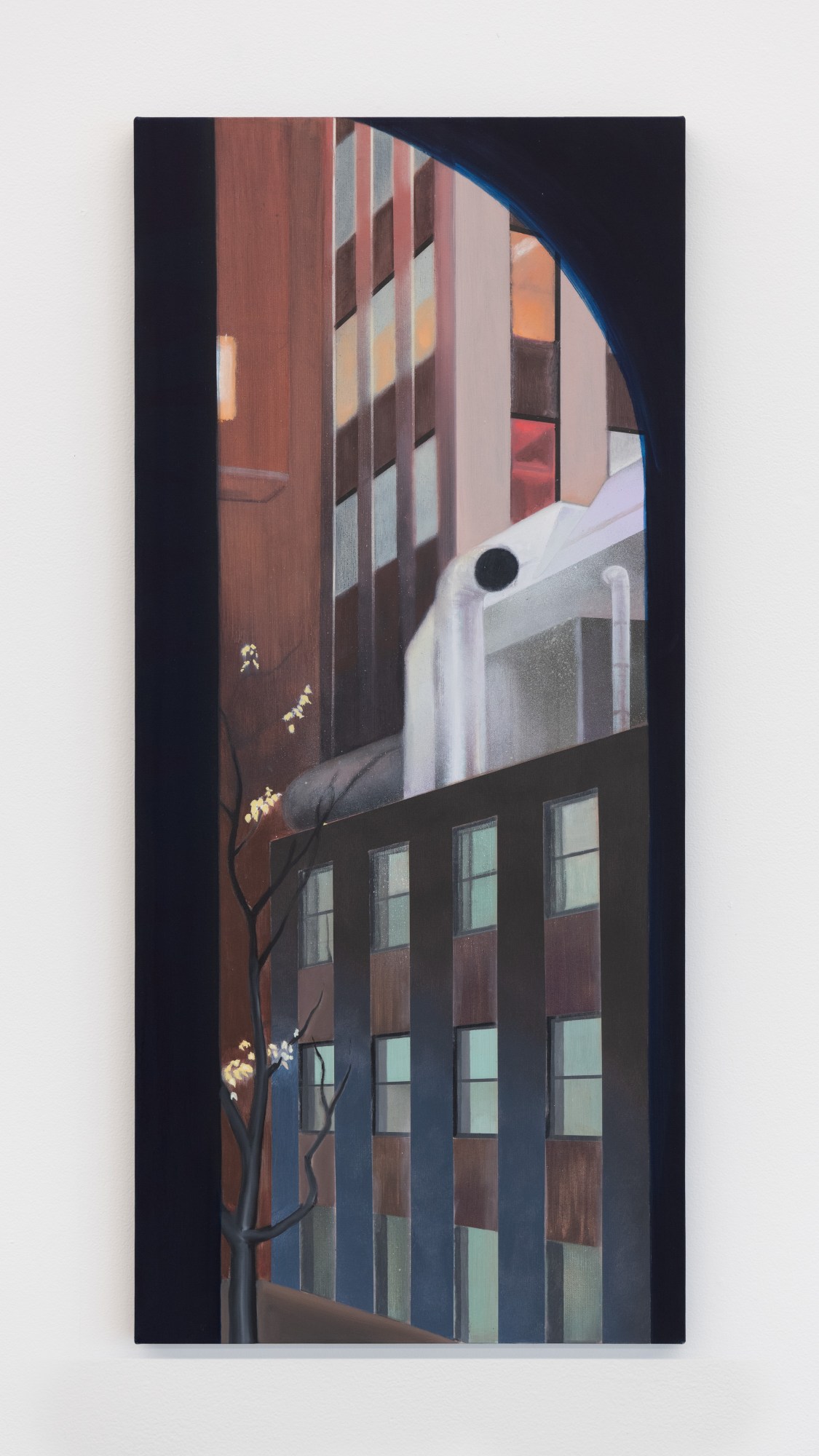
The unequivocal qualities of each city spark tension and reveal something of the inner world of the artist, appearing as a simulacrum of the psychological states affiliated with queer life. In “Studio, Golden Hour (Downtown Los Angeles)” and “Studio, Gray Day (FiDi, NYC)”, the artist presents two empty spaces – a pseudo-self-portrait that they tell us “feels peaceful and meditative”. A small, stifling New York studio with an arched window evokes psychological compression. While in the contrasting diptych of Alannah’s LA studio with views toward the San Gabriel mountains, the scene evokes feelings of emergence and openness. These paintings depict more than a moment but rather the gravity of time itself unfurling before our eyes.
“Because I spend a lot of time with paintings,” Alannah concludes, “I think a lot of my own psychology comes out over time. When I’m honing the work after the sitter has left, reflections on the space we shared will enter, and this is where I start to leave the realms of reality. This series of works is a sort of maladaptive love letter to the cities and people I have been painting. A belief in love and quite frankly a reason to get up and want today and tomorrow to happen.”
‘Serenade’ is at Anat Ebgi, Fountain, Los Angeles, from 14 April to 26 May


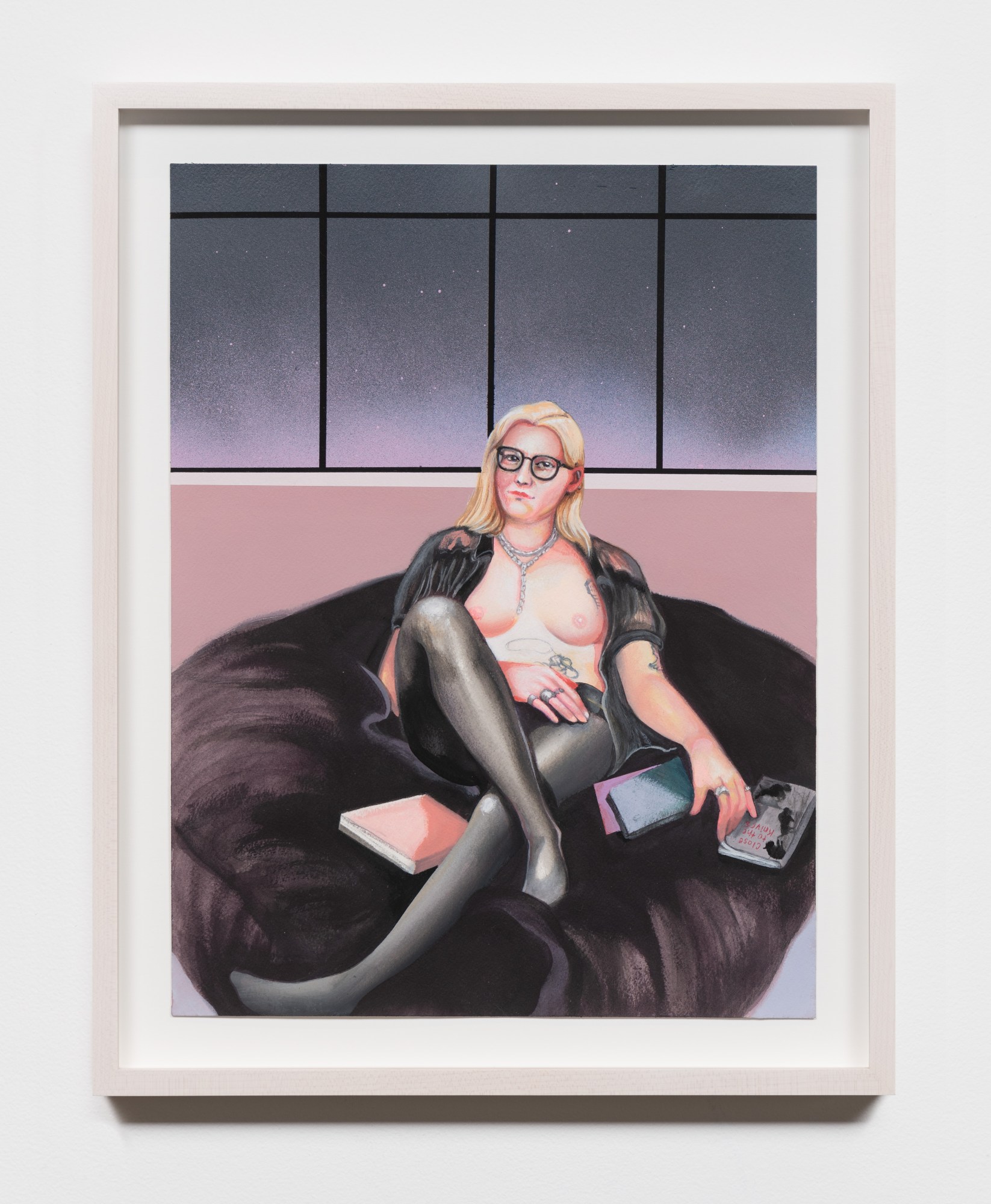
Credits
All images courtesy Alannah Farrell
